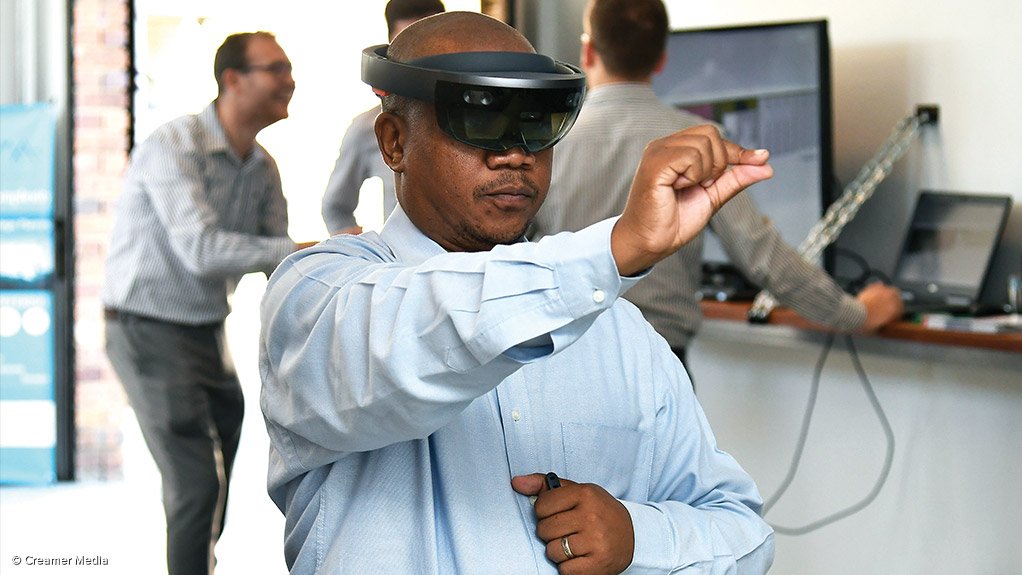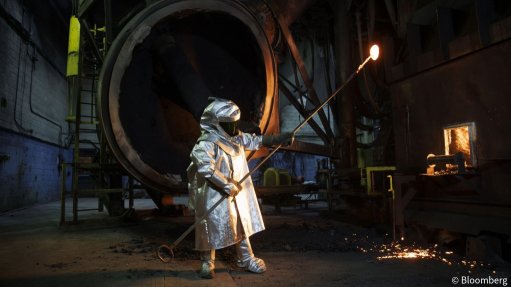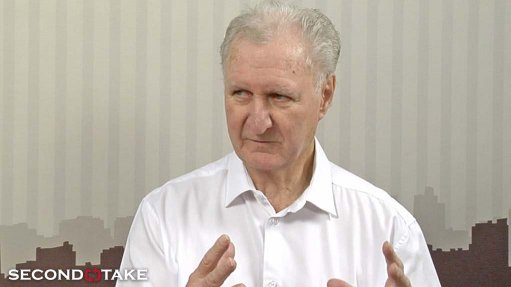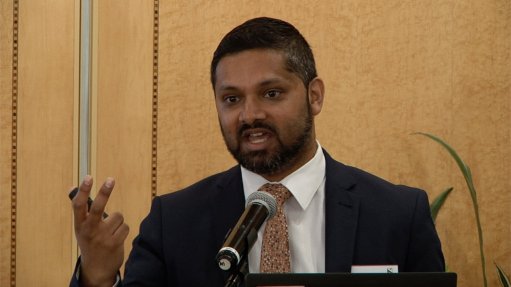Mandela Mining Precinct enhancing collaboration


Mining Mandela Precinct co-director Navin Singh discusses revitalising the South African mining sector.
MANDELA MINING PRECINCT The Mandela Mining Precinct has been successful in coordinating collaboration among government departments, the mining industry and researchers
Photo by Dylan Slater
The Mandela Mining Precinct, officially launched in September 2018 by the departments of Science and Technology, and Mineral Resources, has been hailed as one of the most defining public–private partnerships in South Africa.
The Mandela Mining Precinct has been successful in coordinating collaboration among government departments, the mining industry and researchers, where everyone is working towards one common goal – to improve the state of mining in South Africa and its future prospects, says Mandela Mining Precinct co-director Navin Singh.
“Everyone talks about the Fourth Industrial Revolution (4IR), and how we embrace it in the mining sector is particularly exciting for us,” he enthuses.
Singh reiterates that, in pursuit of modernisation of the South African mining sector, the Mandela Mining Precinct is pursuing six focus areas via three work streams and three cross-cutting initiatives to extend the lives of operations constrained by current commodity- price levels and rising costs.
These include the longevity of current mines, mechanised drilling and blasting programmes, non- explosive rock breaking, advanced orebody knowledge, real-time information management systems and the successful application of technology centred around people.
Singh further states that, in 2018, the focus was on rebuilding capability and capacity, while 2019 has enabled the Mandela Mining Precinct to focus more on where its research and development energies should be expended. With different stakeholders in mining pooling their resources together, there is more funding and a larger scope of work for the programme’s development. There is also a strong focused research plan to address current production challenges.
Mandela Mining Precinct Focus
To keep the sector focused, the Mandela Mining Precinct will continue to play a coordinating role for all mining sector stakeholders.
Firstly – from a mining perspective – the longevity of current mines focuses on mining in its current state. Investment cannot take place in a mine that does not have a long-term future, Singh says, noting that the Mandela Mining Precinct, therefore, is exploring potential ways regarding how mines could embrace use of new technologies to extend the life-of-mine.
Secondly, the mechanised drill and blast programme aims to develop opportunities for mechanisation in some of the mining operations.
Thirdly, the nonexplosive rock-breaking programme aims to identify, develop and support the implementation of solutions that will allow for the continuous breaking of rock from tabular, hard-rock orebodies.
“In South Africa, we have a very cyclical operation dependent on drilling and blasting. We have to clear the mine out for that blasting process. It is almost like a stop-start process, if we could use a mechanical device to extract the ore. The core objective is to have nonstop production, zero harm and no waste mining,” he adds.
The advanced orebody knowledge programme aims to create a ‘glass rock’, which will enable mine planners, rock engineers, geologists and other decision-makers to “see” into the rock, providing them with the information and knowledge that will contribute to early hazard identification and optimal extraction.
This programme will enable people to understand what they are mining, how much of it is being mined and what the associated geological structures are that could potentially impact on safety.
“It has significant opportunity to simultaneously improve productivity, and health and safety,” Singh explains.
Further, the real-time information management systems initiative is intended to provide the “right information to the right person at the right time”, which will allow for proactive decision-making in corrective management decisions, where decision- makers can either improve dangerous situations or enhance productivity levels.
There is also the initiative that focuses on the successful application of technology, which is centred on the way in which technology and the adoption thereof impacts on people without negatively affecting them. This initiative is imperative because, in the local mining industry, there has been more resistance to change in terms of new technology adoptions, owing to a fear of job losses, Singh says.
“Mechanisation does not necessarily mean that a piece of equipment is going to replace the workers. A piece of equipment can perform the job while the person can be standing remotely in a much safer space. That is what we want out of this, zero harm,” he asserts.
Partnership
The Mandela Mining Precinct is focusing on local manufacturing capabilities in conjunction with industrial cluster Mining Equipment Manufacturers of South Africa.
The partnership aims to harness the country’s collective capability to maximise the supply chain, which is increasingly dominated by the foreign original-equipment manufacturers (OEMs).
“Foreign OEMs were supplying us with equipment that was readily made, waiting to be assembled here. Now we are talking about creating a local manufacturing capability in South Africa that can leverage that opportunity for us first and foremost,” says Singh.
Singh notes that, as South Africa has the largest gold and platinum wealth, the focus is now on maximising the country’s natural endowment by mining and beneficiation to drive down production costs.
“We need to create a ‘circular economy’ so that mines become more profitable. Using locally manufactured equipment to mine in South Africa can help drive down costs, increase productivity, which means more jobs for the mining and manufacturing sector.
“We have the resources and the infrastructure to mine it. We must drive the entire value chain for mining from exploration to mining and all the way to processing and beneficiation so that we can reap the benefits of South Africa’s mineral endowment,” he concludes.
Comments
Press Office
Announcements
What's On
Subscribe to improve your user experience...
Option 1 (equivalent of R125 a month):
Receive a weekly copy of Creamer Media's Engineering News & Mining Weekly magazine
(print copy for those in South Africa and e-magazine for those outside of South Africa)
Receive daily email newsletters
Access to full search results
Access archive of magazine back copies
Access to Projects in Progress
Access to ONE Research Report of your choice in PDF format
Option 2 (equivalent of R375 a month):
All benefits from Option 1
PLUS
Access to Creamer Media's Research Channel Africa for ALL Research Reports, in PDF format, on various industrial and mining sectors
including Electricity; Water; Energy Transition; Hydrogen; Roads, Rail and Ports; Coal; Gold; Platinum; Battery Metals; etc.
Already a subscriber?
Forgotten your password?
Receive weekly copy of Creamer Media's Engineering News & Mining Weekly magazine (print copy for those in South Africa and e-magazine for those outside of South Africa)
➕
Recieve daily email newsletters
➕
Access to full search results
➕
Access archive of magazine back copies
➕
Access to Projects in Progress
➕
Access to ONE Research Report of your choice in PDF format
RESEARCH CHANNEL AFRICA
R4500 (equivalent of R375 a month)
SUBSCRIBEAll benefits from Option 1
➕
Access to Creamer Media's Research Channel Africa for ALL Research Reports on various industrial and mining sectors, in PDF format, including on:
Electricity
➕
Water
➕
Energy Transition
➕
Hydrogen
➕
Roads, Rail and Ports
➕
Coal
➕
Gold
➕
Platinum
➕
Battery Metals
➕
etc.
Receive all benefits from Option 1 or Option 2 delivered to numerous people at your company
➕
Multiple User names and Passwords for simultaneous log-ins
➕
Intranet integration access to all in your organisation



















